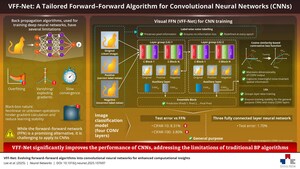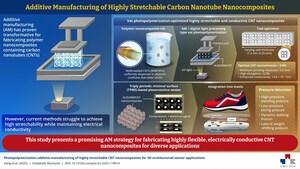
SeoulTech Scientists Develop AI-Based Patent Abstract Generator to Discover and Detail Technology Opportunities
The revolutionary machine-learning system translates patent vacancy into plain English texts, accelerating innovation discovery and R&D strategies
SEOUL, South Korea, Oct. 9, 2025 /PRNewswire/ -- Patents are valuable for the generation of novel ideas through technology opportunity discovery. In recent years, scientists have made several attempts to identify technology opportunities by determining vacancies in patent maps—visual representations of patent distribution in particular technological fields created using dimensionality reduction techniques. However, there is a major bottleneck in this approach: it is challenging to precisely define and interpret the technological content of these patent vacancies.
In a breakthrough study, researchers from the Republic of Korea and the United States, led by Professor Hakyeon Lee of the Department of Industrial Engineering at Seoul National University of Science and Technology, Republic of Korea, have developed an innovative generative approach to discovering technology opportunities from patent maps using machine learning. Their findings were made available online on July 28, 2025 and were published in Volume 68, Part B of the journal Advanced Engineering Informatics on November 1, 2025.
The approach proposed in this study utilizes the text embedding inversion technique—which reverts high-dimensional embeddings to their original data form—to translate patent vacancies into more useful human-readable text.
It comprises a total of five steps: transformation of patent abstracts into high-dimensional vectors via text embedding; autoencoder training to project high-dimensional embeddings into 2D space and facilitate bidirectional mapping; creation of a grid-based patent map via kernel density estimation technique; determination of vacant cells and their coordinates as patent vacancies; and reconstruction of the vacancy coordinates into high-dimensional embedding vectors through decoder, followed by generation of human-readable texts via vec2text.
Prof. Lee remarks: "The most revolutionary aspect of our research is its ability to translate abstract patent vacancies into concrete, human-readable technology descriptions. Unlike previous methods, which could only identify empty spaces on the patent maps without explaining their significance, this AI system can pinpoint a location on the patent map and instantly generate a detailed abstract describing the specific technology that should exist there. It's like having a treasure map that not only shows empty spaces but also reveals exactly what treasure lies beneath each spot."
The researchers demonstrated the novelty of their work via a case study on LiDAR technology using 17,616 patents. This approach successfully identified patent vacancies and translated them into human-readable text, showcasing its potential as a highly promising tool for technology opportunity analysis.
"Our work can fundamentally democratize innovation forecasting. Currently, only large corporations with extensive R&D resources can predict future technology trends. In 5–10 years, this tool could enable small startups to compete with tech giants by identifying untapped opportunities; allow developing countries to leapfrog in technology development by focusing on predicted breakthrough areas; help academic researchers discover interdisciplinary research opportunities automatically; assist policymakers in anticipating technological disruptions and preparing appropriate regulations; and reduce innovation cycles as the time between identifying opportunities and developing solutions shortens dramatically," concludes Prof. Lee.
Notably, the proposed system is already being expanded to automatically generate detailed research proposals and full patent documents from the identified opportunities, potentially creating an end-to-end AI innovation pipeline!
Reference
Title of original paper: Translate patent vacancies into human-readable texts: Identifying technology opportunities with text embedding inversion
Journal: Advanced Engineering Informatics
DOI: 10.1016/j.aei.2025.103661
About the institute Seoul National University of Science and Technology (SEOULTECH)
Website: https://en.seoultech.ac.kr/
Media Contact:
Eunhee Lim
82-2 - 970 - 9166
[email protected]
SOURCE Seoul National University of Science and Technology







Share this article